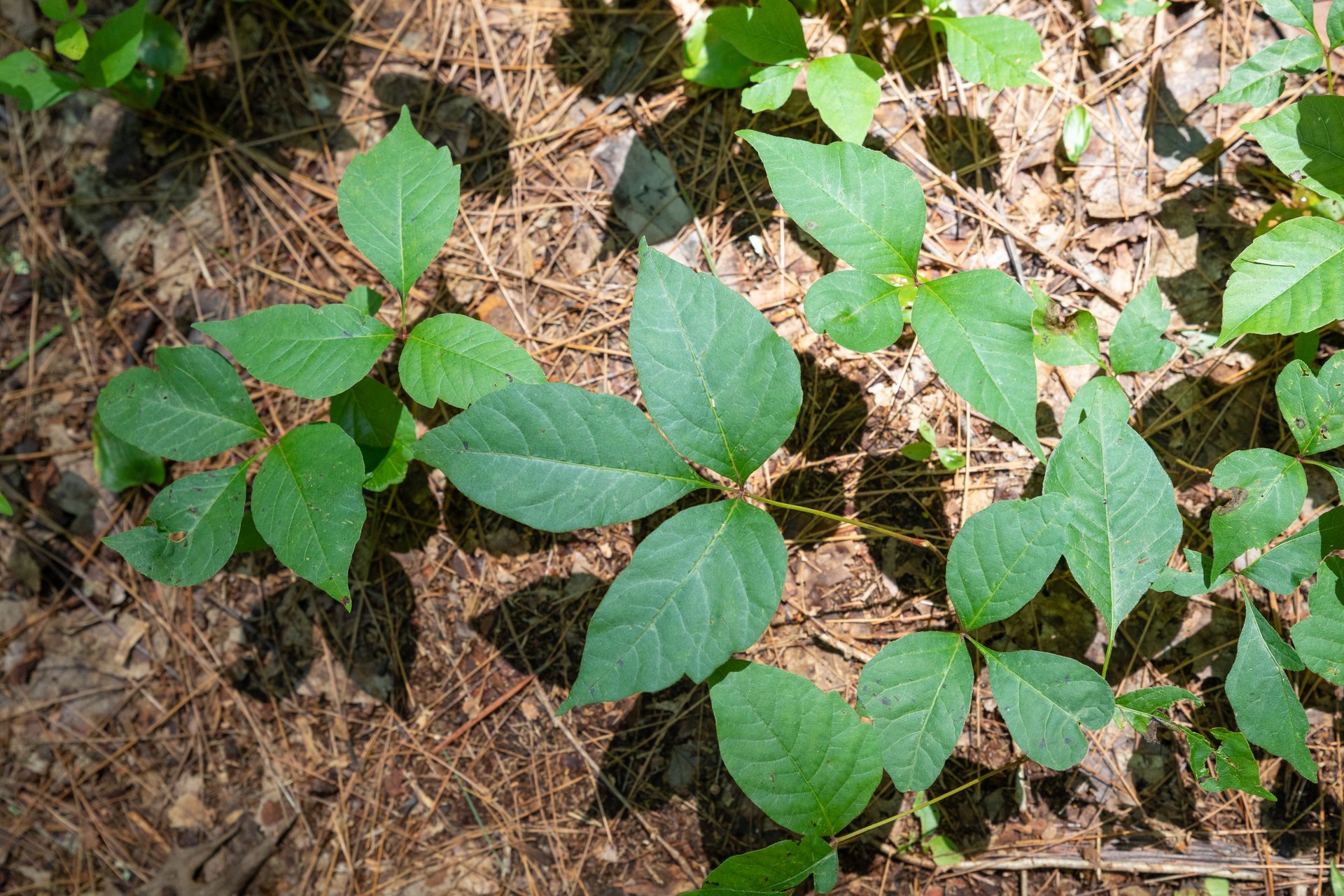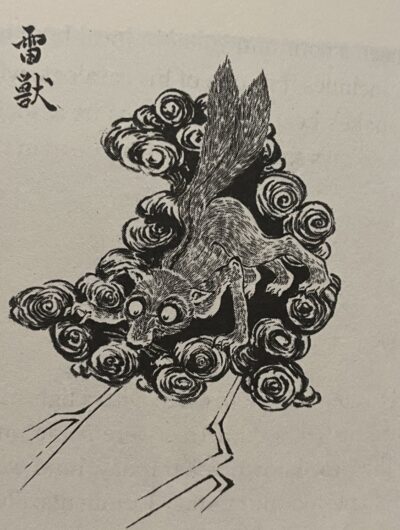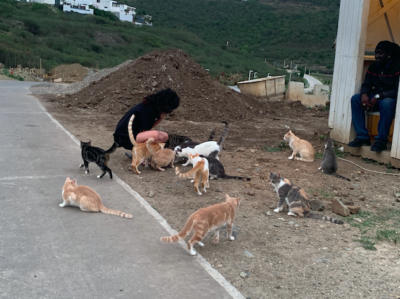| Creator | The Band Lunch |
| Media Form | Song |
| Genre | Rock |
| Technique | Indie |
| Date and Location of Creation | Released on November 26, 2022. Based in New Jersey. |
| Publication Information | Released on Spotify. All Rights Reserved. |
| Invasive Species Represented | English Ivy |
Within the realm of the botanical world, there’s a peculiar paradox that exists between what is celebrated for its aesthetic appearance, and what is feared due to its hidden dangers. Within the notion of invasive species specifically, exists the English Ivy plant. A representation of the species is the song “English Ivy” by TheBandLunch, whose lyrics mirror the invasive nature of the species. According to Living Pianos, music as a practice can be traced back to as far as 6th Century B.C.
English Ivy by TheBandLunch English ivy Surrounds me I don’t know how to think What did you put in my drink Frankly I feel a little sick Open up the window and let the light in Do you think that I just sit here and rot You talk you talk you talk too much I’ll be stuck in here ‘till my heart beat stops I talk I talk I talk too much English ivy Strangles me I can’t catch my breath I’m choking on your smoke it’s getting in my head I need some fresh air Take me somewhere I can relax Before I say something that I can’t take back Do you think that I just sit here and rot You talk you talk you talk too much I’ll be stuck in here ‘till my heartbeat stops I talk I talk I talk too much
The Allure of English Ivy
In reference to what is known by the IUNC Red List of Threatened Species, Common ivy, also referred to scientifically as the Hedera helix, is a plant that has had much ornamental significance due to its lush, green foliage. As described by its scientific name, the plant is classified with the Hedera genus and the species name “helix”, due to its climbing growth habits. This species is celebrated due to its enchanting, wonderland-like appearance, also making it popular for those who are into landscaping and gardening. In the science of botany, the plant itself is naturally growth-prone, and adaptable to most environments, which also makes it favorable. In some cases, people also utilize it for the creation of wall-like spaces for privacy or even insulation from noise and temperature. However, even in the song, we begin to see similar themes of a constant growing ivy that “surrounds” the author. The song’s cover itself is an interesting feature with its imagery of the ivy corroding a set of human lungs. In theory, English ivy seems appealing, however beneath the surface lies an invasive species native to Europe and Western Asia, that can have detrimental, complex effects on the local ecosystem. According to Invasive.org, The plant itself was brought by European colonists in the early 1700s and is recognized as a weed by various areas in the United States, despite its constant marketing as ornamental. Despite the charming facade of decoration, there is a darker truth being masked.
The Invasive Nature of English Ivy
The invasive nature of English ivy threatens native ecosystems by outcompeting local plant species, therefore compromising biodiversity, and disrupting balanced ecosystems. A feature of the song, “English Ivy”, is its creation of a vivid image of entrapment and suffocation, similar to which the real common ivy plant grows nonstop and overwhelms its invading environment. Of course, the song uses the plant as an allegory for that general feeling of being overwhelmed by an inescapable force, but its usage in a physical sense can be attributed to the plant’s actual invasive tendencies. Aggressively, it threatens any open areas as it grows continuously from the ground to the forest canopies. In trees, the English ivy is able to climb up their trunks block sunlight, and prevent photosynthesis, which trees can succumb to over a period of years. The plant itself is also a reservoir for bacterial leaf scorch, or Xylella fastidiosa according to MicrobiologyResearch.org, which can harm a wide variety of trees as well, including oaks, maples, and elm trees. In the song, there is even a reference to the act of “rotting”, which can also be attributed to an effect of the Ivy plant. Such as how English ivy is a source of fear and entrapment in the song, it has the power to entrap other botany in the worst way possible.
The Unjust Paranoia of Poison Ivy

In stark contrast to the admiration often bestowed upon the common ivy plant, Poison Ivy is dealt a vast different feat, despite its nativity to North America. Instead, it often instills fear and dread due to its notorious ability to cause skin irritations. The plant, also referred to as Toxicodendron radicans according to the US National Park Service, despite its negative attributions, the Poison Ivy plant is an integral part of ecosystems in North America, as it provides a means of food and shelter for various wildlife. It produces fruit migrating birds feed on when other sources are scarce, and is also pollinatable for bees and flies. Other insects also feed on its leaves, including caterpillars. Although it’s justifiable to be wary of the plant due to its potential to cause skin rashes, this aversion is often far too heightened.
An Ivy’s Eco-Terrorism
:quality(75)/arc-anglerfish-arc2-prod-elcomercio.s3.amazonaws.com/public/ULB5BHV6U5CCTFTBAOCMSH2DEU.png)
Now, in the realm of fiction exists a particular ivy in the form of the DC character Poison Ivy, whose biography is published on Fandom.com. Poison Ivy the character is an eco-terrorist villain in the universe, who utilizes botanical powers to further her environmental agenda. Eco-terrorism is further explored as a concept by the US Department of Justice. Her abilities are in relation to controlling and manipulating plant life, such as making them grow or making them toxic to harm her opponents. This is ironic because despite her name being Poison Ivy her powers are more aligned with the real-life existence of English ivy, or even its depiction in the song “English Ivy”. Ultimately, her main source of contention with the aforementioned opponents is her unwavering commitment to protecting the environment and essentially safeguarding nature from destructive actions as a result of humanity. Although Poison Ivy’s methods are extreme there is an understanding of her motivations which is to achieve ecological balance by any means necessary. Her name suits her in the sense that despite her existence as a villain due to her extreme methods, she isn’t invasive to her community, in fact, she’d probably be against introducing invasive species as they disrupt ecosystems. Instead, she’s harmful to humans similar to poison ivy, but helpful to the botany and wildlife. Understanding Poison Ivy’s character and her motivations is essential in drawing parallels between the fictional and real-world depictions of invasive species.
Who is Really Invasive?
There’s a deep-seated desire that should exist among us to protect the environment from human-induced destruction, but we’ve seemingly become numb to our own impact. Our real struggles with invasive species such as English ivy force us to grapple with the perhaps unintentional but still heavily impactful consequences of our actions. English ivy continues to hurt our environment at our own fault; however, we continue to do much worse on a constant basis.
English Ivy © 2023 by Alondra Nieves-Orama is licensed under CC BY-NC 4.0




